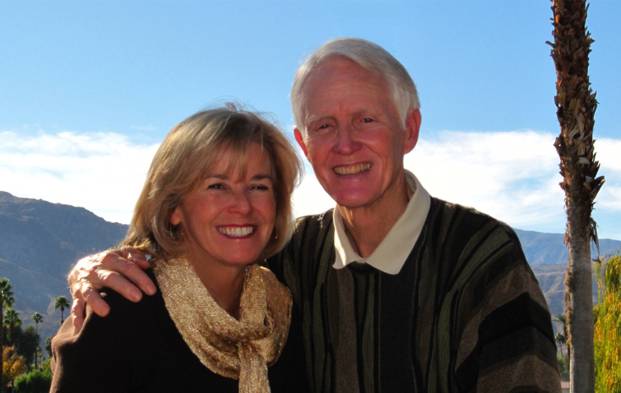
Stop Smoking Help
Learn effective methods to stop smoking by yourself or with help
Tom G. Stevens PhDPsychologist/Professor Emeritus, California State University, Long Beach
Send Feedback/Questions to: Tom.Stevens@csulb.edu
You Can Choose To Be Happy:
Site dedicated to enhancing human happiness, self-development, and success
Go to: Choose To Be Happy Checklist
SITE MAP: All free Self-help resources includes online book, You Can Choose To Be Happy, and SHAQ

|
|||
| search engine by freefind |
Stop Smoking Help
Tom G. Stevens PhD
Stop Smoking Index
InformationAdvice
Internet LinksBooks-Media (not updated)
INFORMATION
Smoking cigarettes, cigars, or marijuana causes
the increased aging and destruction of vital cells and organs throughout your body--especially
your lungs. Smoking causes cancer in many people and is a strong factor in
many other life-threatening illnesses such as heart disease. For more information
about smoking and its effects on health, follow some of the Internet links below.
Stopping the habit of smoking completely is one of the most powerful things you can do to increase your chances of a long, healthy, and physically fit life. Millions of people have completely stopped successfully. Many do it entirely on their own without help; but many others get help from reading or stop-smoking programs. Follow the Internet links below to find both types of help.
A simple, successful stop-smoking program
In Dr. Tom Stevens' and Dr. Robert Kapche's previous stop-smoking research program, they used a combination of the rapid smoking technique, a supportive weekly group, a contract to give a substantial amount of money to a cause opposed to smoker's views, and cognitive therapy for defeating pro-smoking thoughts and encouraging healthier thoughts. Over 75% of the group were not smoking a year later. This program was based upon a literature review of the most powerful techniques to stop smoking. You can use these same simple techniques on yourself.
1. Rapid Smoking Technique. Of the above techniques, the rapid smoking technique seems to be is the single most effective to end craving. You can do it yourself by (1) going into a small room such as a closet or bathroom and closing the door, (2) smoking one cigarette after another until you get a raw throat and very queasy stomach [not until you vomit], and (3) leaving the room and throwing all smoking paraphernalia into the trash. In the future when you get the urge to smoke vividly imagine the dry throat and queasy feeling you got.
2. Contract. Make a contract that the first time you smoke one cigarette, a person you can trust will mail a prewritten check (e.g. say $100) to a cause you don't like. You can build in special treats and rewards for going the first day, first week, first month, etc. without smoking. Make the significant rewards that you really look forward to. Make the contract before you begin.
3. Avoid tempting situations and people. At first, avoid all situations where you are tempted to smoke (e.g. bars, friends who smoke, high tension situations, etc.). In the next few weeks or months, as you gain strength, you can begin to gradually start exposing yourself to many of these situations. Although use good judgment and avoid indefinitely those that you know might be too tempting. Plan these before you begin.
4. Coping with stress and negative emotions (anxiety, depression, boredom, frustration). For most people smoking is often used as a stress-reducer or way to cope with emotions. Learn and use other ways to cope with negative feelings (take SHAQ and follow help-links to find some such as exercise, visualization, and relaxation techniques, listening to music, solving the underlying problem [best idea], reading something inspirational or helpful or thinking positive thoughts). Overwhelmingly stressful situations are one of the main causes of relapse. Plan for what you will do if such a situation occurs. And if it does, remember that all the work you have done may be wasted if you don't avoid smoking during this difficult time.
5. Support from others. Before you start your program, if possible get into a stop-smoking support group. Also, talk with all those near to you and those who might tempt to to smoke. Ask for their help in supporting your efforts. Think about what each could do that would help and ask them directly for their help.
6. Finding new rewards. For most people smoking is often used as a reward. Think about how you use it as a reward and what other rewards you could substitute.
7. Replacing pro-smoking thoughts. Many smokers associate smoking with positive self-concepts like independence, extraversion, creativity, rebelliousness, or strength. As they stop smoking they begin to feel as though they are abandoning their traditional group of people or giving up part of their identity. Search out these underlying beliefs or assumptions and confront them with anti-smoking thoughts such as "Cigarettes don't make me free, they make me addicted to them and are ruining my health so that I may become an invalid some day that others have to take care of." Search for any underlying beliefs that may be contributing to your continued smoking and confront them with more realistic ones.
OTHER
INTERNET LINKS
Stop
Smoking Information and Self-Help
American Cancer Society
Has information about
smoking effects and treatment. Search site from home page.
http://www.cancer.org/
National Cancer Institute
***Mayo Clinic Stop Smoking Help
http://www.mayohealth.org/mayo/9910/htm/smoke.htm
University of California San Francisco Medical Center Internet
Stop-Smoking Program
http://stopsmoking.ucsf.edu/
Quit Smoking at Quit Smoking
Advice,
support and encouragement for those who are trying to quit smoking.
www.quitsmokingsupport.com/
TryToStop
Lots of information -- quitting obstacles,
social situations, urges, weight control, withdrawal, etc.
www.trytostop.org/
Dr Tom G Stevens' BOOK: You Can Choose To Be Happy:
"Rise Above" Anxiety, Anger, and Depression
(with Research Results)
Go to Free BOOK DOWNLOAD
pdf
Go to BOOK CONTENTS
Go to RESEARCH SUMMARY CHAPTER
SELF-HELP INFORMATION + SITE MAP:
FREE SELF-HELP MATERIALS on this web site (click here to see list)
Free SHAQ QUESTIONNAIRE: Go to:
Success and Happiness Attributes Questionnaire (SHAQ)
to assess yourself on many factors--including your
HQ-Happiness Quotient
ORDERING the BOOK:
How to ORDER You Can Choose To Be Happy
Web site created and maintained by: Tom G. Stevens PhD,
Psychologist/Professor Emeritus, California State University, Long
Beach Counseling and Psychological Services
URL of this web site:
http://home.csulb.edu/~tstevens/index.html
HOME PAGE: Return to Dr Tom Stevens' Home Page Copyright 2025; Tom G. Stevens PhD